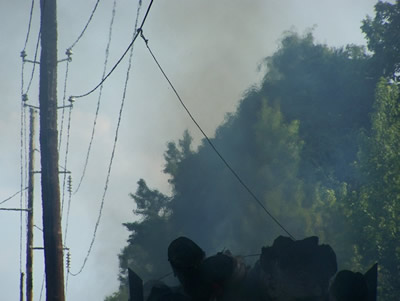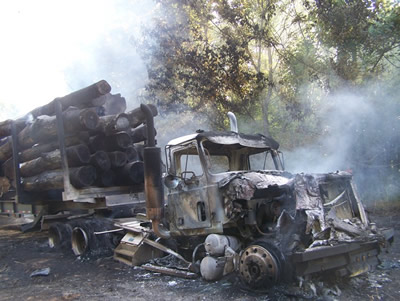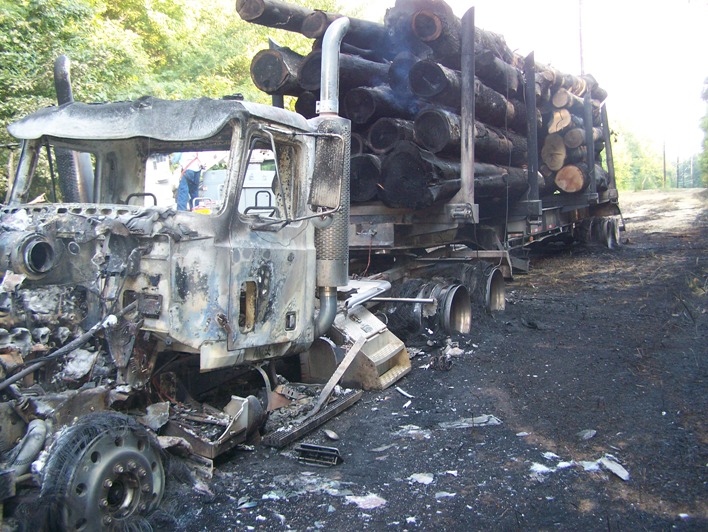Incident Report
Subject: Transformer Fires & Electrical Risk
Date
of Email reporting Incident: Tue 30/09/2008
Report Detail:
I have been sent some pretty interesting electrical and transformer fire pictures (separate incidents variety of different scenarios) which may be of interest to the membership (Thanks Jan Knappert and Dave White) which should provoke some thoughts on how you deal with electrical events? How do you protect your transformers and what emergency response plans you may have in place. Do you have fixed or semi fixed protection installed? Do you rely on manual intervention? Have you the correct media and volume available on hand to effectively deal with what may be a protracted event?
I include an extract from NFPA 15 below which covers transformer protection.
This topic has been covered before and can be seen within the Shared Learning Archive in the members section of the JOIFF website www.joiff.com Typical Transformer layout as depicted within 'NFPA 15 Water Spray Fixed Systems of Fire Protection 2007 Edition'.
7.4.4 Transformers.
7.4.4.1* Transformer protection shall provide complete water spray impingement on all exposed exterior surfaces.
7.4.4.2 Where there is insufficient space to install water spray nozzles underneath transformers such that the water spray cannot directly impinge upon the bottom surfaces, it shall be permitted to protect the surfaces underneath the transformer by horizontal projection or by nozzles directed to cool the area below the transformer projections.
7.4.4.3 Application and Protection.
7.4.4.3.1 The water shall be applied at a net rate not less than 0.25
gpm/ft2 [10.2 (L/min)/m2] of projected area of rectangular prism envelope for the transformer and its appurtenances, and not less than
0.15 gpm/ft2 [6.1 (L/min)/m2] on the expected nonabsorbing ground surface area of exposure.
7.4.4.3.2 The water shall be applied at a net rate of not less than
0.15 gpm/ft2 [6.1(L/min)/m2] on the expected nonabsorbing ground surface area of exposure.
7.4.4.3.3 Water spray application as specified in 7.4.4.3.1 and
7.4.4.3.2 shall be provided for special configurations, conservator tanks, pumps, and so forth.
7.4.4.3.4 Where transformer components create spaces greater than 12 in. (305 mm) in width, the surfaces shall be individually protected.
7.4.4.3.5 Where there is insufficient clearance to achieve direct impingement, it shall be permitted to protect the surfaces underneath the transformer by horzontal projection or by nozzles directed to cool the area below the transformer projections.
7.4.4.3.6 The water supply shall be capable of supplying both the design flow rate and 250 gpm (946 L/min) for hose streams for a minimum duration of 1 hour.
7.4.4.4 Water spray piping shall not be routed across the top of the transformer tank or across the face of the transformer cabinet.
7.4.4.5 Piping shall be permitted to be routed across the top of the transformer tank or across the face of the transformer cabinet, where impingement cannot be accomplished with any other configuration and the required distance from live electrical components is maintained. (See
6.1.2.)
7.4.4.6 Nozzles shall be positioned such that the water spray does not envelop energized bushings or lightning arresters by direct impingement.
7.4.4.7 Direct impingement of water spray on energized bushings and/or lightning arresters shall be permitted only when authorized by the manufacturer or manufacturer’s literature and the owner.
7.5* Prevention of Fire.
7.5.1 The system shall operate as intended for the time necessary to dissolve, dilute, disperse, or cool flammable vapor, gases, or hazardous materials.
7.5.2 The duration of release of the flammable materials shall be included in the determination of the water spray duration time.
7.5.3 The minimum net rate of application shall be based upon field experience with the product or upon actual test data.
Also out of interest I have added an electric arc video which keeps to the electricity theme...
Additional Documentation:
|














